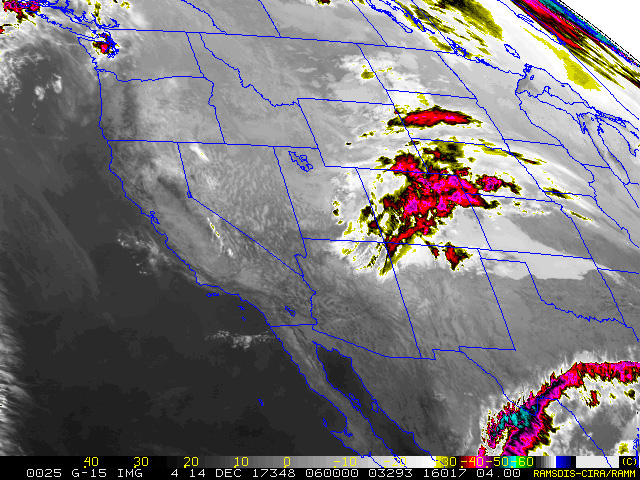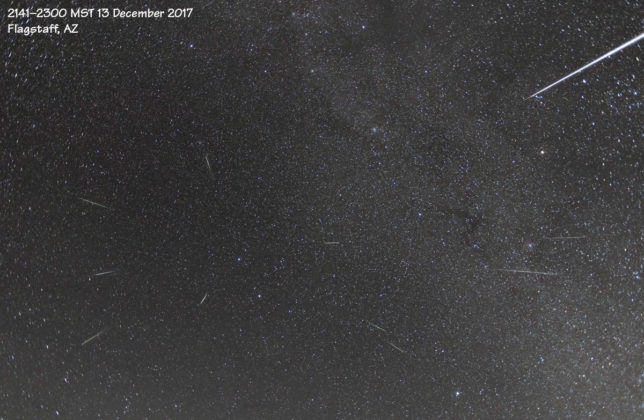The Geminid meteor shower peaked on the evening of 13 December and skies were incredibly clear all that day. Just as darkness was arriving, clouds were starting to approach from the north. Would I be able to get some photos of a few meteors in the early evening before the clouds arrived?
The clouds moved in about 45 minutes after I started shooting and remained through most of the evening. If I had been located a bit farther to the west or south, clouds might not have been a problem, as can be seen in this Infra-red satellite image.

Now, that’s just bad luck on my part.
I pointed the camera at the radiant and used my iOptron Skytracker to keep the camera pointed at the radiant as it rose higher in the sky during the evening. I was then able to combine several images showing a handful of meteors originating from the constellation Gemini.
The brilliant meteor in the upper right corner occurred while the sky was partly cloudy and, as a result, the beginning of the track was obscured by clouds. I didn’t see this bright flash as I was looking in another direction but it was so brilliant that it lit up the sky and landscape for a second or two.

The small number of meteors captured by the camera doesn’t tell the whole story. There were many more—some brilliant and many long-tracked—that streaked across the sky that evening. We had a wonderful time looking up at the sky.